What We’re Reading… June 2024
The June issue of Liver Transplantation, the official Journal of ILTS and the AASLD, is out now.
Free access for ILTS members!
Article selections by A Mi Mi Kyaw, Kenan Moral, Tommy Ivanics, Daniel Jover, Ryan Chadha, Abdul Rahman Hakeem, Ashwin Rammohan
| HEPATOLOGY Journal of Hepatology Prognostic Scores for Ursodeoxycholic Acid-Treated Patients Predict Graft Loss and Mortality in Recurrent Primary Biliary Cholangitis after Liver Transplantation Background/aim: Recurrent primary biliary cholangitis (rPBC) develops in approximately 30% of patients and negatively impacts graft and overall patient survival after liver transplantation (LT). There is a lack of data regarding the response rate to ursodeoxycholic acid (UDCA) in rPBC. We evaluated a large, international, multi-center cohort to assess the performance of scores for PBC to predict the risk of graft and overall survival after LT in patients with rPBC. More Liver Transplantation An international, multicenter, survey-based analysis of practice and management of acute liver failure Liver Transplantation (lww.com)Introduction: Acute liver failure (ALF) is an acute liver dysfunction with coagulopathy and hepatic encephalopathy in a patient with no known liver disease. As ALF is rare and large clinical trials are lacking, the level of evidence regarding its management is low-moderate, favoring heterogeneous clinical practice. In this international multicenter survey study, we aimed to investigate the current practice and management of patients with ALF. More Transplantation Expanding Selection Criteria in Deceased Donor Liver Transplantation for Hepatocellular Carcinoma: Long-term Follow-up of a National Registry and 2 Transplant Centers Background: This study compares selection criteria for liver transplant (LT) for hepatocellular carcinoma (HCC) for inclusivity and predictive ability to identify the most permissive criteria that maintain patient outcomes. More |
| SURGERY American Journal of Transplantation Enhanced Role of Multi-Pair Donor Swaps in Response to Size Incompatibility: The First Two 5-Way and the First 6-Way Liver Paired Exchanges A significant portion of liver transplantations in many countries is conducted via living-donor liver transplantation (LDLT). However, numerous potential donors are unable to donate to their intended recipients due to factors such as blood type incompatibility or size incompatibility. Despite this, an incompatible donor for one recipient may still be a viable donor for another patient. In recent decades, several transplant centers have introduced liver paired exchange (LPE) programs, facilitating donor exchanges between patients and their incompatible donors, thereby enabling compatible transplants. More Liver Transplantation An updated analysis of retransplantation following living donor liver transplantation in the US: insights from the latest UNOS database Background: There is no recent update on the clinical course of retransplantation (re-LT) after living-donor liver transplantation (LDLT) in the US using recent national data. More Transplantation Quantifying the Disadvantage of Small Recipient Size on the Liver Transplantation Waitlist, a Longitudinal Analysis Within the Eurotransplant Region Background: Small adult patients with end-stage liver disease waitlisted for liver transplantation may face a shortage of size-matched liver grafts. This may result in longer waiting times, increased waitlist removal, and waitlist mortality. This study aims to assess access to transplantation in transplant candidates with below-average bodyweight throughout the Eurotransplant region. More |
| ANESTHESIA AND CRITICAL CARE BMC Anesthesiology A comparison of hemodynamic measurement methods during orthotopic liver transplantation: evaluating agreement and trending ability of PiCCO versus pulmonary artery catheter techniques Background: Significant hemodynamic changes occur during liver transplantation, emphasizing the importance of precious and continuous monitoring of cardiac output, cardiac index, and other parameters. More Liver Transplantation Neuromuscular electrical stimulation, muscle mass, and physical function decline in the early phase after living-donor liver transplantation Background: To investigate the effects of neuromuscular electrical stimulation (NMES) in addition to conventional early mobilization in the early postoperative period after living-donor liver transplantation on body composition and physical function. More Liver Transplantation Safety and efficacy of continuous terlipressin infusion in HRS-AKI in a transplant population Background and Aims: Hepatorenal syndrome-acute kidney injury (HRS-AKI) is associated with significant morbidity and mortality. While liver transplantation is the definitive treatment, continuous terlipressin infusion for HRS-AKI may provide benefit and as such was assessed in a population comprised of liver transplant (LT) candidates. More |





